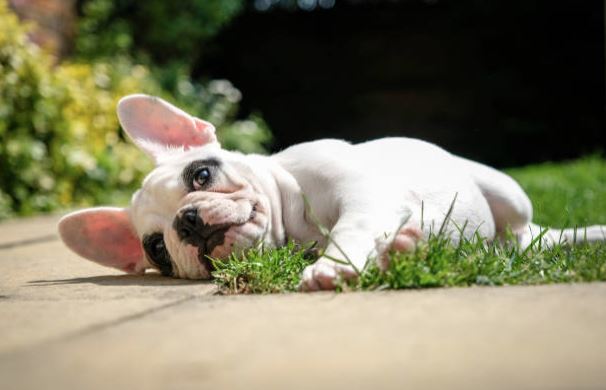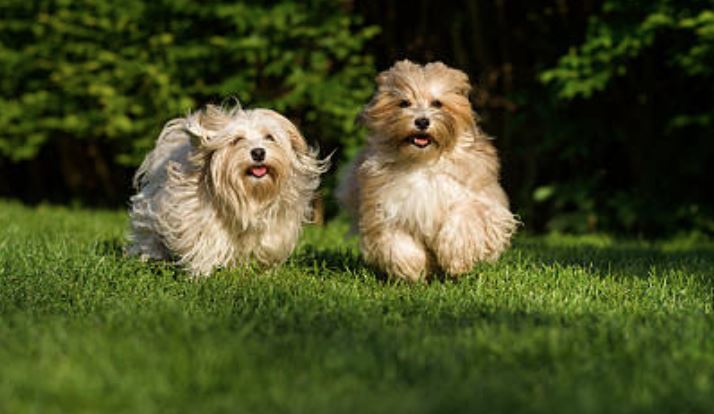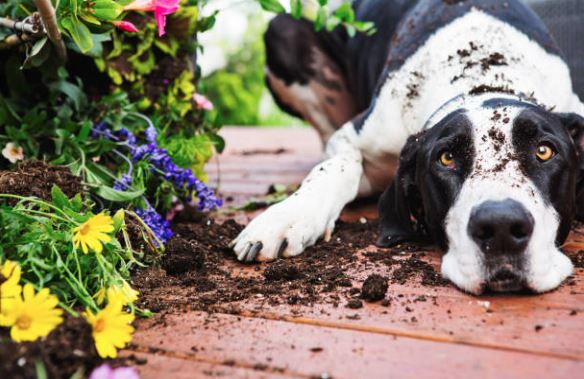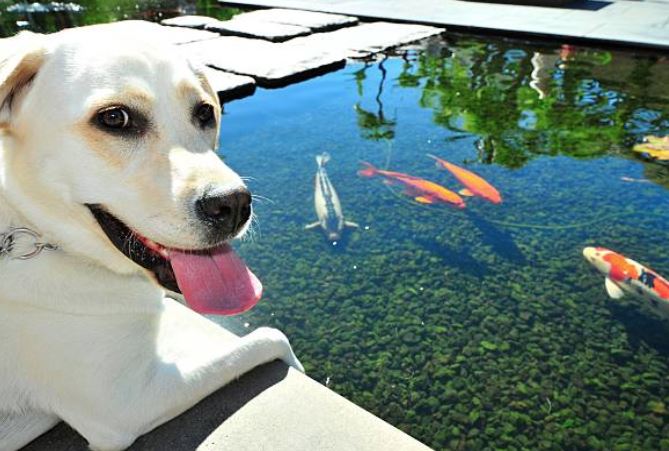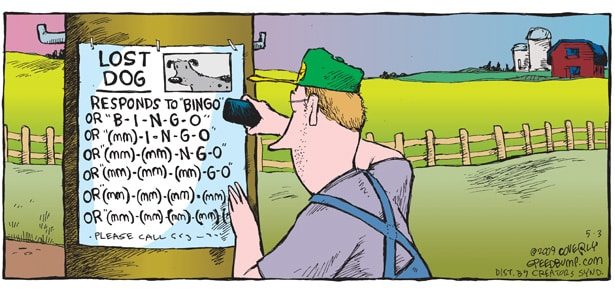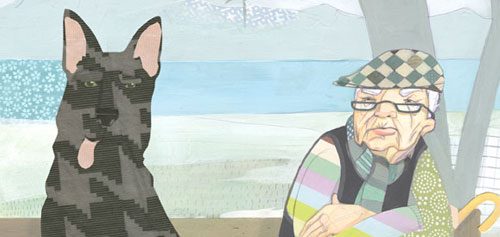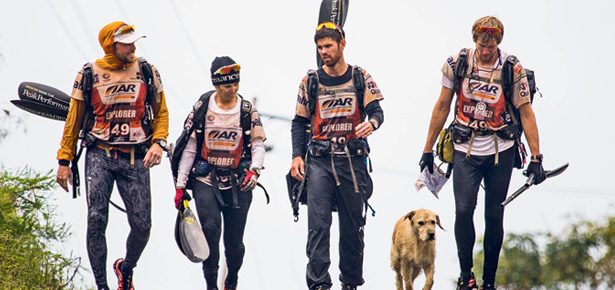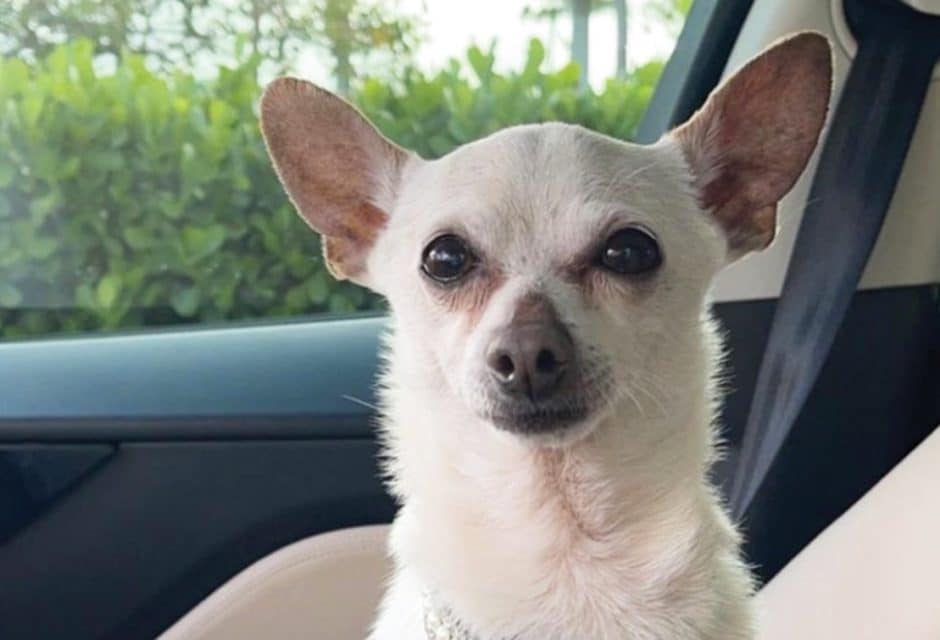
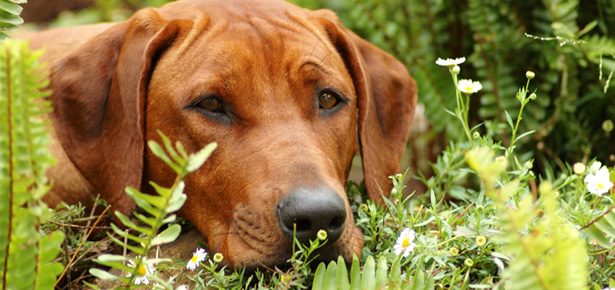
Gardening 101
How to have your dog and keep your garden, too!
Think having a beautiful backyard and a dog are diametrically opposed? Think again. We spoke with Stephen Westcott-Gratton, who was the senior horticultural editor at Canadian Gardening, and he had much to say on the subject, especially after celebrating his English Springer Spaniel puppy Worcester’s first birthday. Both dog and garden are thriving.
Training a puppy to behave well in a garden was actually easier than Westcott-Gratton expected, which was a relief to all concerned.
“It’s kind of like having young kids,” he says. “You have to train your dog the same way you train your children never to put anything in their mouths.” Save for a few exceptions when this doesn’t work (Worcester just can’t stay away from Westcott-Gratton’s maple keys), educating your pup is the best way to protect both your dog from your garden, and your garden from the dog.
PATCHY PROBLEM
For many gardeners, a rippling, emerald-green swath of lawn is the showpiece of their horticultural expertise. Much tearing of hair and wails of lamentation are spent over the discovery of a blemish in this perfection. But Fido has to “go” somewhere.
Heavily fertilized lawns are already receiving near-maximum levels of nitrogen (nitrogen is good for grasses in the correct dosage, hence it’s presence in fertilizer and the lush ring that often surrounds urine-burnt patches). Avoid over-fertilizing to protect your lawn from the additional nitrogen in your dog’s urine pushing it past the tipping point.
To avoid brown patches throughout the lawn, train (or retrain) your dog to go in a specified area. This isn’t difficult to do, but will require supervised bathroom breaks until your dog is reliably choosing to relieve himself in the desired area. Consider planting a hardy, urine-resistant ground covering, such as clover, in the designated potty area, and concealing it with shrubs or taller ornamental grasses to make a screen, or reseed with a more pee-proof variety of grass, such as perennial ryegrasses and fescues.
Sprinkling lime or gypsum in the affected area speeds up the recovery of existing grass, or new growth if you’ve reseeded, by neutralizing the acidity of the affected area. Encouraging your dog to drink more will help dilute the urine and decrease the risk of lawn burn.
The notion that it is just female dogs’ urine that causes the burnt-out patches in the lawn is a myth. Both male and female dogs’ urine will create brown or yellow patches due to the high nitrogen content in their urine. Our guess is this myth got off the ground, so to speak, because female dogs squat to pee, concentrating their urine in one place, while male dogs tend to lift a leg in a number of locations, spreading around the damage.
PICK YOUR PLANTS
Westcott-Gratton’s first thought when he brought Worcester home was, “God help the garden.” Then he realized he had to worry about his pup’s well-being as well. Many garden plants can be toxic to dogs, so if your pup is prone to eating everything he encounters (Labrador owners: take heed!), there are certain plants you’d do well to avoid.
When it comes to flowers, this list includes foxgloves, lily of the valley, and pretty much anything in the buttercup family, such as hellebores, columbines, and delphiniums. The safest flowers are the ones that are completely edible and which you can use in your own salads and dishes (bonus!). These include violets, pansies, and roses, as well as flowers from vegetables like squash. The signet marigold is one of Westcott-Gratton’s favourite annuals. One of the most famous varieties is called “Lemon Gem” for its lemon colour and delicious lemon flavour.
A vegetable garden is rewarding and yields bounty that can be enjoyed by both you and your dog (see page 76). A fence is often useful to protect this area, especially at the delicate seedling stage. The foliage of fruits and vegetables in the nightshade family, such as tomatoes, potatoes, and eggplants, is toxic, but most dogs will avoid these.
Culinary herbs like parsley, oregano, sage, thyme, mint, and rosemary are all safe for dogs. Apart from not being toxic, they also pack a strong taste, so Fido will unlikely bother them. Aromatics such as lavender are also a great choice.
A strawberry patch, apple trees, and raspberry canes are all marvelous dog-friendly additions to your garden. Dogs can learn to pick berries or other fruit if they acquire a taste for it, so don’t be surprised if your harvest below “dog height” is negligible.
For a list of frequently encountered toxic plants, go to aspca.org/toxic.
If your dog continues to get into your flower beds, consider raised beds, decorative stands, or hanging baskets. Motto: work smarter, not harder.
THE DIGGING DILEMMA
Dogs dig. So what do you do when you dig your dog, but you don’t dig your dog’s digging? To discourage Digger from excavating your flower bed and tunneling through your tomatoes, consider creating a space in your yard designed specifically for “paws-on activity.” A shaded sandbox or sand pit is a great idea, particularly as many dogs love to dig out a cool space to lie in during the warmer months. Situate it at the base of a tree or surround it by low shrubs, and consider adding a layer of wood chips. “A lot of animals like [wood chips] because they keep everything quite fluffy and light up top and it’s easier for them to dig and bury than solid earth,” according to Westcott-Gratton. Giving Digger a place of his own for his hobby may ensure that you harvest spuds from your potato patch and not a basketful of buried chew toys.
CHEMICAL-FREE FOR YOU & ME
Little Fluffy spends a lot of her time outdoors with her eyes, nose, mouth, and skin in contact with the greenery and soil, so make sure that your gardening products are not toxic. While many states and provinces have banned pesticide use, this is not the case everywhere. Take a careful look at what you’re spreading on your lawn and garden and avoid any chemical herbicides or pesticides.
“If you have an animal that is in your yard, you really have to…be strictly organic,” according to Westcott-Gratton. There are no traditional chemical pesticides, herbicides, or fungicides that are not potentially harmful to your pet. Need convincing? A study by Purdue University veterinary researchers found exposure to herbicide-treated lawns and gardens increased the risk of bladder cancer by four to seven times in Scottish Terriers. The study adds to earlier research conducted by the National Institutes of Health that found elevated rates of canine lymphoma in dogs exposed to lawn pesticides. The level of risk corresponded directly with exposure to these chemicals: the greater the exposure, the higher the risk.
If your garden requires some extra protection against bugs, choose organic products such as copper sulfate or Bordeaux mixture, a blend of copper sulfate and slaked lime used to control fungus and downy mildew. These are safe for dogs, even if ingested. Westcott-Gratton suggests choosing plants that naturally require less in the way of chemical pest protection. Roses, for example, are highly susceptible to pests, so either be prepared with organic people- and pet-friendly Safer insecticidal soap or choose something else to plant.
SHADY LADY
Strategic planting of trees and bushes to create shady space in your yard will not only add beauty and interest but will provide your dog with a place to rest and cool off from the heat. Lady will also enjoy playing “cave dweller” under the low-hanging boughs.
GROUND PATROL
Many dogs like to patrol the perimeter of their property to guard against intruders such as cats and marauding squirrels. Unfortunately, this behaviour can wear paths in your grass/ground covering. If your dog sees himself as an extra in Stalag 17, instead of attempting to force a changing of the guard, consider creating a pretty, meandering, perimeter-mapping pathway covered with mulch and contained with lawn edging or a rock-work border.
Potential Danger: Sweet-smelling but potentially harmful cocoa bean mulch
Cocoa mulch, made of cocoa bean shells, is a by-product of chocolate production. It is commonly used in landscaping, but pet parents would do best to use an alternative mulch; if eaten in large quantities, cocoa mulch can be toxic to pets.
“Dogs are attracted to the fertilizer’s sweet smell,” says Dr. Steven Hansen, ASPCA Senior Vice President of Animal Health Services, “but like chocolate, cocoa bean mulch can be too much for our canine companions.”
The ASPCA notes that, “Ingestion of large amounts of cocoa bean mulch, which contains residual amounts of theobromine—a methylxanthine found in chocolate and known to be toxic to dogs—may cause a variety of clinical signs. These typically start with vomiting, diarrhea and elevated heart rate, and if large amounts are consumed, they may progress to hyperactivity, muscle tremors and possibly other more serious neurological signs.”
“We advise pet parents not to use cocoa mulch in areas where dogs can be exposed unobserved, particularly dogs who have indiscriminate eating habits,” says Dr. Hansen. Use instead a nontoxic alternative, such as shredded pine, cedar or hemlock bark.
WATER FEATURES
“If everybody had an ocean….” sing those quintessential boys of summer, the Beach Boys. While Buddy might not be into surfing (yet!), he, like many dogs, may love to wade, play, and cool off in an outdoor water source. When adding a pond or fountain, make it dog-friendly by keeping the water clean and fresh (a pump is often essential; stagnant water breeds mosquitoes), and, of course, chemical free. The water must be drinkable, and it needs to be shallow enough for Buddy to safely enter and exit.
RUN, FORREST, RUN!
Like Forrest Gump, most dogs enjoy a good tear-away once in a while. It’s a way of expressing exuberance, working off energy, blowing off steam, and, yes, escaping bullies. However, flying feet coupled with sudden stops and turns can wreak havoc on sod. For your Forrest’s racetrack, there are several kinds of grasses that are easy to care for. A good choice is old Kentucky bluegrass, which doesn’t need to be mowed or fertilized and once it’s established you don’t really have to water it. Then when your dog wants to break the sound barrier, you can sit back with a mint julep and a stopwatch and enjoy the show.
DOGWOOD DREAMS
Having a space where flowers, plants, and a dog share a common space does require some consideration, planning, and time, but it is definitely worth it. As Westcott-Gratton puts it, “It’s a lifestyle choice. The two go hand in hand.” You and your dog can share an outdoor Eden replete with colours, tastes, scents, sounds, and textures to nourish and delight both your souls.
Join the newsletter and never miss out on dog content again!
"*" indicates required fields
By clicking the arrow, you agree to our web Terms of Use and Privacy & Cookie Policy. Easy unsubscribe links are provided in every email.
